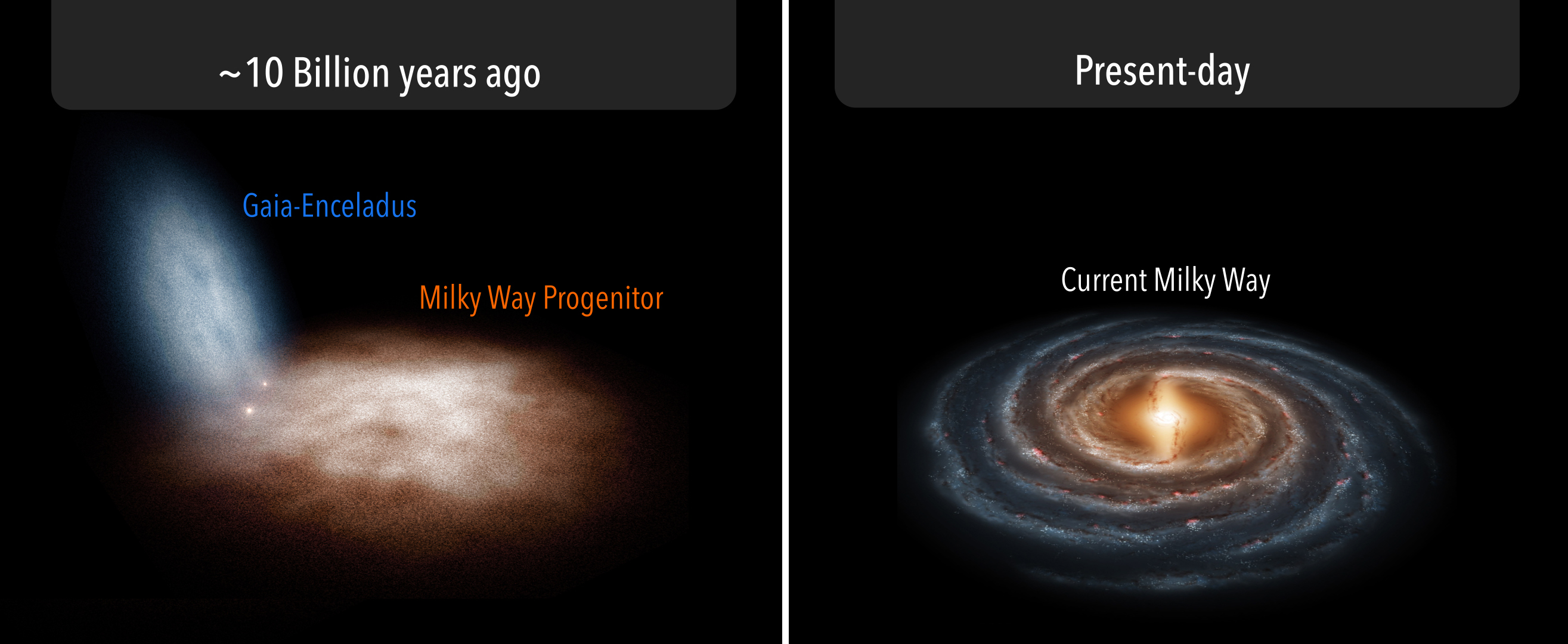An analysis of the local Milky Way halo stellar populations has been recently published in the paper "Uncovering the birth of the Milky Way through accurate stellar ages with Gaia" (Gallart et al. 2019, Nature Astronomy). This paper has raised considerable media attention. The IAC press release features an artist view of the birth of the Milky Way.

More in depth:
The CMD of the kinematically selected halo population published from Gaia DR2 data (Babusiaux et al. 2018) showed two enigmatic sequences running parallel in color from the main sequence to the sub-giant and red-giant branch, indicating the presence of two distinct subpopulations in the halo. The blue sequence has been associated with a major accretion event experienced by the Milky Way early in its history, with the merged object, Gaia-Enceladus, contributing an important fraction of stars in the inner halo (Helmi et al. 2018; Haywood et al. 2018). The red sequence has been associated with the thick disk (Haywood et al. 2018) by the similarity in chemical composition.
Figure 1 (upper panels) displays (a) the CMD of the kinematically selected Milky Way halo within 2 Kpc of the Sun (with |b|>30 to restrict disk contamination) and (b) the CMD of a geometrically defined thick disk (|Z|>1100) within the same volume. We compared the distribution of stars in these observed CMDs with that in CMDs computed with state-of-the-art stellar evolution models (Pietrinferni et al. 2006) and found the combination of ages and chemical compositions of the stars that best reproduce the observed CMDs. These best-fit CMDs are displayed in the bottom two panels of Figure 1. The model CMDs clearly succeed at reproducing the various features observed in the empirical CMDs.

Figure 2 displays the distribution of ages and metallicities of these best-fit model CMDs, divided in the blue and red sequences in the case of the halo CMD. The age distributions clearly demonstrate that the two sequences in the halo CMD are composed by stars that are coeval and formed at the earliest possible times in the life of the Universe. The difference in color is a result of the red and blue sequence stars having different metallicities. The inferred age distributions also clearly show that the thick disc population is younger than the two halo populations.These results, allow us to tightly constrain that the merger occurred 10 Gyr ago, and to conclude that the red sequence is composed by stars formed in the Milky Way during its first ~ 3 Gyr of evolution, right before the merger with Gaia-Enceladus took place, and heated to halo-like kinematics by the impact. The associated infalling gas would have contributed to maintain and stoke star formation in the early disk to its maximum inferred intensity 9.5 Gyr ago.
